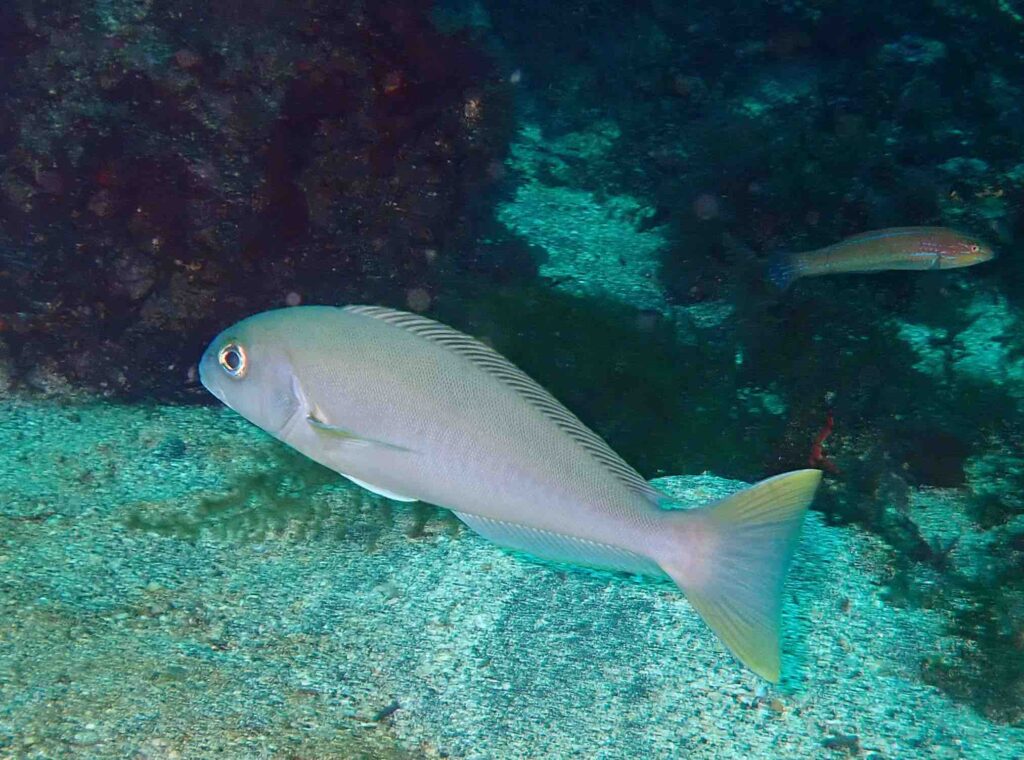Abstract
Understanding the diet of two demersal species, the ocean white fish (Caulolatilus princeps) and white spotted sand bass (Paralabrax albomaculatus) provides insights into the trophic strategies they have evolved to co-exist in rocky reefs and soft bottom habitats in the Galapagos Marine Reserve (GMR). We applied two complementary techniques (stomach content and stable isotopes analysis) to determine the trophic habits between species, and categories (sex, life stages and seasons). Sampling was carried out in several sites of fishing importance within the GMR between 2017 and 2018, obtaining 254 stomachs and 58 muscle samples for C. princeps, and 14 stomachs and 34 muscle samples for P. albomaculatus. Trophic spectrum (diet composition), of both predators contained pelagic and benthic prey. The slender anchovy (Anchoa ischana) was the most important prey for C. princeps with no significant differences in the diet between sex, life stages or seasons (p > 0.05); while the most important prey for P. albomaculatus was the threadfin bass (Pronotogrammus multifasciatus). The δ13C and δ15N signatures were significantly different among species (tvalue = 11.81, p < 0.05 and tvalue = 4.67, p <0.05, respectively) suggesting differences in the carbon source (i.e., feeding areas) as well as the preference for different trophic levels (i.e., different prey). Intraspecific analysis in C. princeps showed no differences within sex, life stage and seasons (p > 0.05). Feeding strategies were similar for both predators, with a reduced trophic niche and high variability between preys consumed. This work provides baseline information on two species of ecological and commercial importance within the GMR and highlights the value of trophic studies to generate useful information for an ecosystem-based fisheries management.
Read the article in the link: https://doi.org/10.1016/j.rsma.2024.103530






